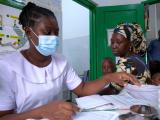Jun 11, 2010
Case counts in Salmonella, E coli outbreaks edge upward
The count of Salmonella serotype Hvittingfoss infections linked to Subway restaurants in Illinois increased by four today, to 75, the Illinois Department of Public Health (IDPH) reported. Twenty-three counties have had cases, one more than reported yesterday. Meanwhile, Minnesota officials today reported three more Escherichia coli O157:H7 cases linked to raw milk from a farm in the town of Gibbon, raising the total to eight. Two of the latest cases were in school-aged children who drank milk from the farm, and their E coli strain matched that in the five earlier cases, the Minnesota Department of Health (MDH) said. The other newly identified case was in an infant from the same household as one of the earlier patients.
Jun 11 MDH press release
Novavax joint venture completes vaccine facility in India
Novavax, a biopharmaceutical company based in Rockville, Md., announced yesterday that CPL Biologicals, its joint venture with India's Cadila Pharmaceuticals, Ltd., has completed construction of a vaccine facility in Dholka, India, that will produce pandemic and seasonal flu vaccines based on Novavax's virus-like protein (VLP) cell-based platform. The next steps are installation of equipment and validation that the facility conforms with global vaccine production standards. Novavax projects that the facility will have the capacity to produce 60 million doses of flu vaccines per year.
Jun 10 Novavax press release
Update details H5N1 activity in Egyptian poultry
Egypt-based Strengthening Avian Influenza Detection and Response (SAIDR) today updated its reports on H5N1 avian influenza findings in poultry flocks since about the middle of March. Egypt is one of the countries where the H5N1 virus is endemic in poultry populations. The group posted 102 reports, half of which reflects active surveillance activities. Most of the outbreaks occurred in small household poultry holdings. Nineteen of the H5N1 findings were on farms, and most reflected preslaughter testing. Some of the outbreaks were linked to potentially infected birds bought from peddlers and to geese and Peking ducks bought from live-bird markets. In an outbreak that occurred in mid May in Dakahlia governorate, investigators found that two pet cats died after contact with dead infected birds in one of the households.
FDA seizes honey contaminated with antibiotic
The US Food and Drug Administration (FDA) announced yesterday that it seized about $32,000 worth of honey imported from China because it contained chloramphenicol, an antibiotic that could cause serious illness or death. The honey had been sold to Alfred L. Wolff Inc. of Chicago and was seized by federal marshals at a warehouse in Philadelphia, the FDA said. FDA testing of a sample of the honey detected the antibiotic, which is not approved for use in food, animal feed, or food animals in the United States. The FDA described chloramphenicol as a potent antibiotic that is approved for use in humans only when less toxic drugs don't work. "People who are sensitive to chloramphenicol can develop a type of bone marrow depression called aplastic anemia, which can be fatal," the FDA said. The agency said it is inventorying the seized product.
Jun 10 FDA announcement
Morocco certified as free of malaria
Morocco, a country where malaria once struck hundreds of thousands of people each year, has been certified as free of the disease, according to the World Health Organization (WHO). Both types of malaria—Plasmodium falciparum and P vivax—were endemic in Morocco in decades past, the WHO said today in its Weekly Epidemiological Record. Cases peaked at more than 350,000 in 1939 and remained high through the 1940s. "Since then, the burden of the disease has declined steadily thanks to a combination of control interventions, improved health service coverage and economic development," the WHO said. The last indigenous case of P falciparum was recorded in 1974, but P vivax continued. In 1999 the country's health ministry set its sights on elimination of the disease, and the last indigenous case of P vivax was reported in 2004. In 2008 Morocco started the steps toward certification of elimination of the disease; the country achieved this status last month. Morocco is the second nation, after the United Arab Emirates, to achieve such certification since the WHO re-established its certification procedure in 2004.
Jun 11 WHO Weekly Epidemiological Record



















